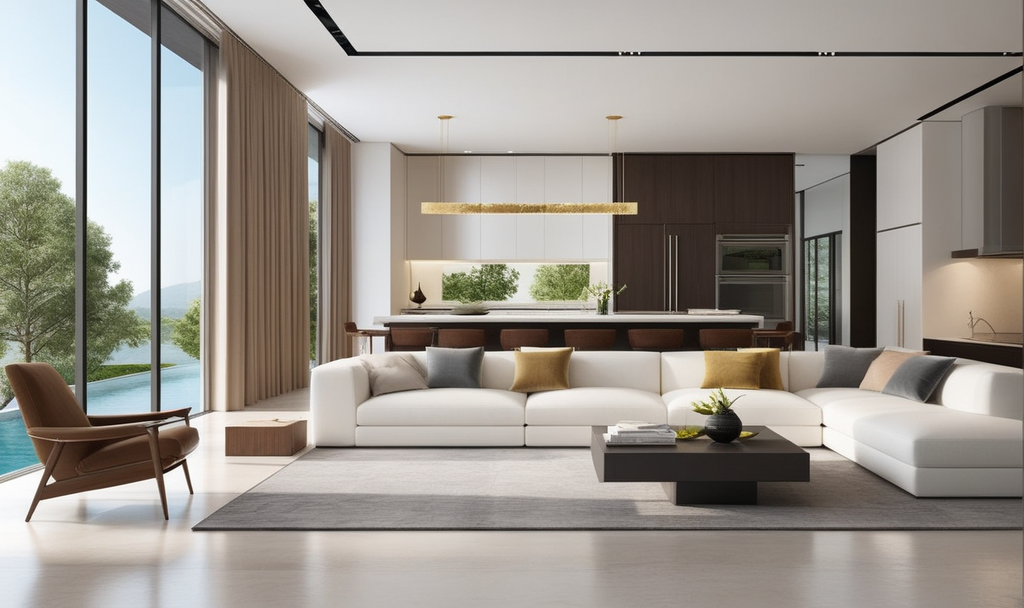In the realm of design, interior architecture stands out as a unique blend of artistic expression and practical functionality. It goes beyond mere decoration, delving into the structural aspects of a space to create an environment that is both visually appealing and purposeful. The art of interior architecture lies in the delicate balance between aesthetics and functionality, weaving together form and substance to enhance the quality of living and working spaces.
Defining Interior Architecture
Before we explore the artistry involved, let’s define what interior architecture entails. Unlike traditional interior design, which primarily focuses on decoration and furnishings, interior architecture involves the structural and spatial design of an interior. It considers the layout, flow, and organization of a space, emphasizing how it can best serve its intended purpose.
Understanding the Artistic Element
The term “art” in interior architecture doesn’t merely refer to decorative elements. It encompasses the creative process of transforming a space into a visually engaging and harmonious environment. The artistry lies in the thoughtful integration of various design elements, such as color, texture, light, and form, to evoke a specific mood or atmosphere.
The Intersection of Aesthetics and Functionality
Harmony in Design
Achieving a balance between aesthetics and functionality is paramount in interior architecture. Aesthetically pleasing spaces contribute to a positive and uplifting atmosphere, enhancing the overall experience of occupants. However, this should not come at the expense of functionality. The challenge is to seamlessly integrate both aspects, creating a space that not only looks good but also serves its intended purpose efficiently.
Form Follows Function
One of the fundamental principles in interior architecture is the idea that form should follow function. This means that the design of a space should be dictated by its purpose. Every element within the interior should contribute to the overall functionality, ensuring a seamless and intuitive experience for its users.
Strategies for Balancing Aesthetics and Functionality
1. Spatial Planning
Effective spatial planning is at the core of balancing aesthetics and functionality. It involves organizing the layout of a space to optimize its use. Consideration must be given to traffic flow, accessibility, and the placement of key elements. By strategically planning the spatial arrangement, designers can create a visually appealing environment that is also highly functional.
2. Multifunctional Furniture and Fixtures
Incorporating multifunctional furniture and fixtures is a practical strategy in interior architecture. These pieces serve dual purposes, maximizing the use of space without compromising on aesthetics. For example, a coffee table with built-in storage or a sofa that can be converted into a bed adds functionality without cluttering the space.
3. Lighting Design
Lighting plays a crucial role in setting the tone and mood of a space. In interior architecture, the art lies in choosing the right lighting fixtures and designing a lighting scheme that complements the overall aesthetic. Additionally, lighting should be functional, providing sufficient illumination for various activities within the space.
Case Studies: Mastering the Art of Interior Architecture
1. The Louvre Pyramid
Designed by architect I. M. Pei, the Louvre Pyramid is a striking example of how interior architecture can transform a space. Serving as the main entrance to the Louvre Museum in Paris, the pyramid seamlessly combines aesthetics and functionality. Its glass structure allows natural light to filter into the underground space, creating an inviting and visually stunning entrance while maintaining the functionality of a modern museum.
2. Fallingwater by Frank Lloyd Wright
Frank Lloyd Wright’s Fallingwater is a masterpiece that exemplifies the integration of architecture with its natural surroundings. The design not only captures the beauty of the landscape but also provides a functional and comfortable living space. The use of cantilevered balconies and large windows showcases the art of blending aesthetics with the practical considerations of the site.
Challenges in Achieving Balance
While the art of interior architecture holds great promise, it is not without its challenges. Designers often face the dilemma of prioritizing aesthetics over functionality or vice versa. Budget constraints, client preferences, and existing structural limitations can also impact the ability to strike the perfect balance.
Overcoming Challenges: The Design Process
A successful interior architecture project involves a meticulous design process that addresses both aesthetic and functional considerations. Designers must engage in thorough research, understand the needs of the occupants, and collaborate closely with clients to ensure that the final design meets both artistic and practical expectations.
The Future of Interior Architecture
As we look to the future, the art of interior architecture is poised to evolve with advancements in technology, sustainable design practices, and changing societal needs. Designers will continue to explore innovative ways to marry aesthetics and functionality, creating spaces that not only delight the senses but also contribute to the well-being of those who inhabit them.
Embracing Sustainable Practices
The growing emphasis on sustainability in design is reshaping the field of interior architecture. Designers are incorporating eco-friendly materials, energy-efficient systems, and biophilic design principles to create spaces that are not only visually appealing but also environmentally responsible.
Technology and Smart Design
Advancements in technology, such as smart home systems and integrated automation, are influencing the way interior architecture is approached. Designers are leveraging technology to enhance the functionality of spaces, offering occupants greater control over lighting, temperature, and other environmental factors.
If you have any question about this article, please contact us …
If you want, you can learn more about this through the Cambridge dictionary.
Conclusion: The Masterpiece Unveiled
In the art of interior architecture, the unveiling of a masterpiece involves the careful orchestration of aesthetics and functionality. Each design decision contributes to the narrative of the space, creating an environment that is both a visual delight and a practical haven. As we continue to explore the possibilities within this dynamic field, the pursuit of balance remains at the forefront — a testament to the enduring artistry of interior architecture.

